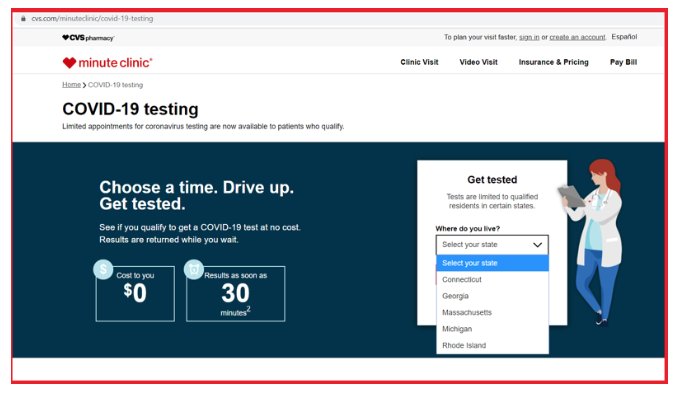More About How To Get Into A Pain Clinic In Ohio
If you live with chronic pain, you likely require a team of doctors to accomplish an optimum outcome. Here's what to anticipate from a discomfort specialized practice or center. So you've decided it's time to make a consultation with a discomfort physician, or at a pain center. Here's what you require to know before scheduling your visitand what to expect once you exist.
" Discomfort physicians come from various academic backgrounds," says Dmitry M. Arbuck, MD, president and medical director of the Indiana Polyclinic in Indianapolis, a discomfort management center. Dr. Arbuck is accredited by the American Academy of Discomfort Management and the American Board of Psychiatry and Neurology. "Any doctor from any specialtyfor instance, emergency medication, household practice, neurologymay be a pain doctor." The pain doctor you see will depend upon your symptoms, diagnosis, and needs.
Arbuck explains - how to refer to a pain clinic. "The doctors within a discomfort management clinic or practice may focus on rheumatology, orthopedics, gastroenterology, psychiatry," or other areas, for instance. Pain doctors have actually earned the title of MD (Physician of Medication) or DO (Medical Professional of Osteopathic Medicine). Some pain physicians are fellowship-trained, implying they received post-residency training in this sub-specialty.
( Learn more about interventional pain methods.) Pain physicians who have actually met specific qualificationsincluding completing a residency or fellowship and passing a composed examare considered to be board-certified. Many pain physicians are dual-board certified in, for instance, anesthesiology and palliative medication. However, not all pain physicians are board-certified or have formal training in discomfort medicine, but that does not mean you shouldn't consult them, states Dr.
Dr. Arbuck suggests that people looking for help for persistent pain see doctors at a clinic or a group practice because "no one professional can actually treat discomfort alone." He discusses, "You don't want to select a particular type of doctor, always, however a good doctor in a good practice."" Discomfort practices ought to be multi-specialty, with a good credibility for using more than one strategy and the ability to attend to more than one issue," he recommends.
As Dr. Arbuck describes, "If you have one physician or specialty that's more vital than the others," the therapy that specialty prefers will be emphasized, and "other treatments may be disregarded." This model can be bothersome due to the fact that, as he explains: "One discomfort client may require more interventions, while another might require a more psychological technique." And because discomfort clients also gain from multiple therapies, they "require to have access to doctors who click here can refer them to other professionals along with work with them." Another benefit of a multi-specialty pain practice or clinic is that it helps with routine multi-specialty case conferences, in which all the physicians meet to discuss client cases.
Some Known Factual Statements About What Disease Is The Estimated Cost For A Free-standing Pain Clinic
Arbuck explains. Think of it like a board meetingthe more that members with various backgrounds collaborate about an individual challenge, the more most likely they are to resolve that specific problem. At a discomfort center, you may likewise satisfy with occupational therapists (OTs), physical therapists (PTs), certified doctor's assistants (PA-C), nurse professionals (NPs), licensed acupuncturists (LAc), chiropractic practitioners (DC), and exercise physiologists.

The latter are typically social employees, with titles such as licensed medical social worker (LCSW). Dr. Arbuck views reliable pain medicine as a spectrum of services, with mental treatment on one end and interventional discomfort management on the other. In in between, patients have the ability to obtain a mix of pharmacological and rehabilitative services from different medical professionals and other doctor.
Preliminary visits may include one or more of the following: a physical examination, interview about your case history, pain evaluation, and diagnostic tests or imaging (such as x-rays). In addition, "A good multi-specialty clinic will pay equal attention to medical, psychiatric, surgical, household, dependency, and social history. That's the only method follow this link to evaluate patients thoroughly," Dr - where north of boston is there a pain clinic that accepts patients eith no insurance.
At the Indiana Polyclinic, for instance, clients have the chance to consult experts from four main locations: This might be an internist, neurologist, household professional, or perhaps a rheumatologist. This doctor normally has a large understanding of a broad medical specialized. This medical professional is most likely to be from a field that where interventions are frequently utilized to treat discomfort, such as anesthesiology.
This service provider will be someone who focuses on the function of the body, such as a physical medication and rehab (PM&R) physician, physiotherapist, physical therapist, or chiropractic practitioner. Depending on the client, he or she may likewise see a psychiatrist, psychologist, and/or psychotherapist. how to open a pain management clinic in florida. The client's medical care doctor may coordinate care.
Arbuck. "Narcotics are simply one tool out of many, and one tool can not operate at all times." Additionally, he notes, "pain clinics are not simply puts for injections, nor is pain management just about psychology. The objective is to come to consultations, and follow through with rehab programs. Pain management is a commitment.
Fascination About Where Is The Pain Clinic In Morristown
Arbuck mentions. Treatment can be pricey and because of that, patients and medical professional's workplaces often require to eliminate for medications, appointments, and tests, but this difficulty occurs outside of discomfort centers too. Clients should likewise be aware that anytime managed substances (such as opioids) are included in a treatment strategy, the doctor is going to request drug screenings and Patient Agreement types relating to rules to abide by for safe dosingboth are advised by federal agencies such as the FDA (see a sample Patient-Prescriber Opioid Agreement at https://www.fda.gov/media/114694/download).

" I didn't http://daltonmojn822.fotosdefrases.com/some-known-incorrect-statements-about-what-gets-you-kicked-out-of-a-pain-clinic just have pain in my head, it was in the neck, jaw, absolutely all over," recalls the HR expert, who lives in the Indianapolis location. Wendy started seeing a neurologist, who put her on high doses of the anti-seizure medications gabapentin and zonisamide for pain relief. Unfortunately, she says, "The discomfort worsened, and the adverse effects from the medication left me unable to functionI had amnesia, blurred vision, and muscle weakness, and my face was numb.
Wendy's neurologist provided her Botox injections, but these triggered some hearing and vision loss. She likewise tried acupuncture and even had a discomfort relief gadget implanted in her lower back (it has given that been gotten rid of). Lastly, after 12 years of extreme, persistent discomfort, Wendy was referred to the Indiana Polyclinic.
She likewise went through different assessments, consisting of an MRI, which her previous medical professional had carried out, along with allergic reaction and hereditary screening. From the latter, "We learned that my system does not take in medication correctly and discomfort medications are not effective." Quickly afterwards, Wendy got some unexpected news: "I learnt I didn't have chronic migraine, I had trigeminal neuralgia." This condition provides with signs of severe pain in the facial location, triggered by the brain's three-branched trigeminal nerve.
Wendy started receiving nerve blocks from the clinic's anesthesiologist. She gets 6 shots of lidocaine (an anesthetic) and an anti-inflammatory to her forehead and cheeks. "It's five minutes of agonizing pain for four months of relief," Wendy shares. She also took the chance to work with the clinic's discomfort psychologist twice a month, and the occupational therapist once a month.
